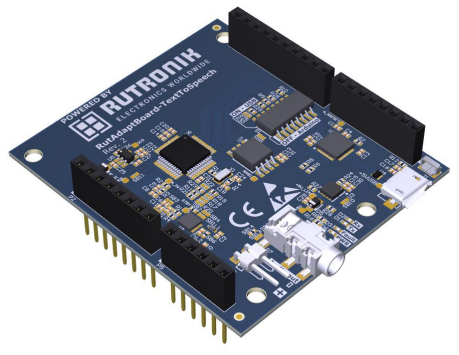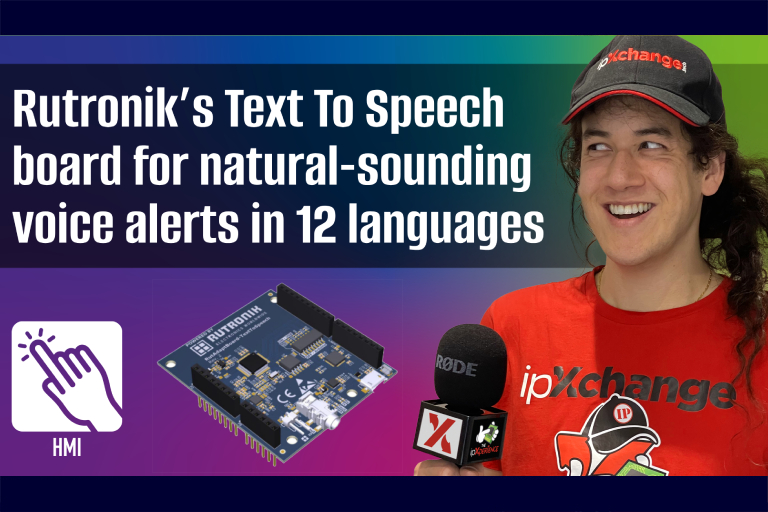Rutronik’s Text To Speech Adapter Board is the perfect platform for developing voice-guidance Human Machine Interfaces (HMIs). In conjunction with an Arduino-interface-type host board that houses a microcontroller pre-programmed for one’s desired speech content, the audio output from the text-to-speech board is available from a convenient 3.5 mm jack socket for headphone or speaker connection. The natural-sounding speech output supports 12 language options: US and UK English, French and Canadian French, German, Italian, Russian, European Spanish and Latin American Spanish, Chinese, Japanese, and Korean, all easily programmable to your host MCU using an included software, with user-specified intonation tweaking to ensure correct pronunciation of words not found in the dictionary, such as company names.
The EPSON S1V3G340 is an LSI that incorporates high-compression, high-quality audio decoding functions, an external SPI flash memory interface, and a DA converter. The voice-data creation tool for the EPSON voice guidance LSI allows easy creation of high-quality voice data without the need for studio recording, and use of external SPI flash memory allows easy interchanging of voice data, where additional voice data can be transferred from a host when required. General-purpose output ports are provided to allow flexible system design, and all functions are controlled by commands via a serial interface for easy addition to any existing system incorporating a host.
The audio playback for the device uses a proprietary EPSON data format with an adjustable bit rate of 40 kbps to 16 kbps and a sampling rate of 16 kHz. A sequencer function allows for up to 64 phrases with unlimited combinations and variable phrase interval delay settings from 0 ms to 2047 ms. The S1V3G340 comes in a QFP-52 pin package (10 mm × 10 mm) and runs off a single supply voltage of 2.2 V to 5.5 V. Along with the Arduino-compatible headers and stereo output jack, Rutronik’s development platform also has GPIO for the S1VG340, a micro-USB port, an additional audio output header, and a configuration switch to select USB or Arduino communication.
(All images sourced from Rutronik)


